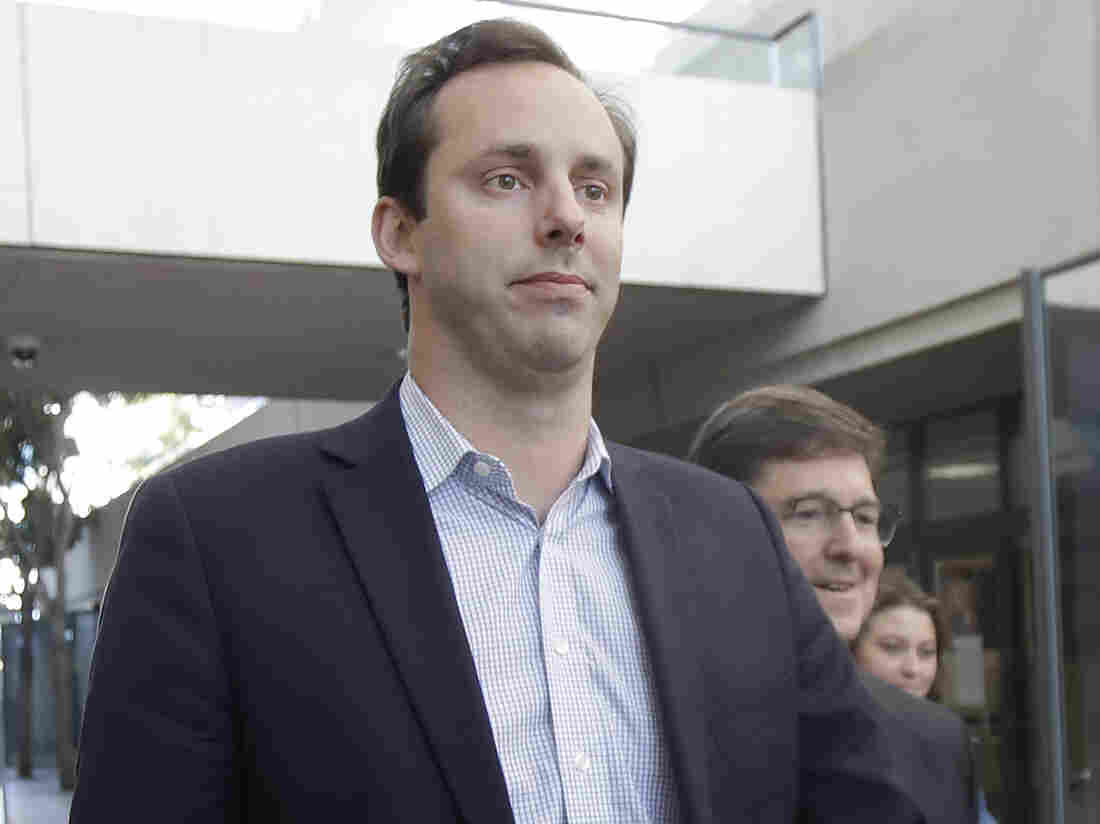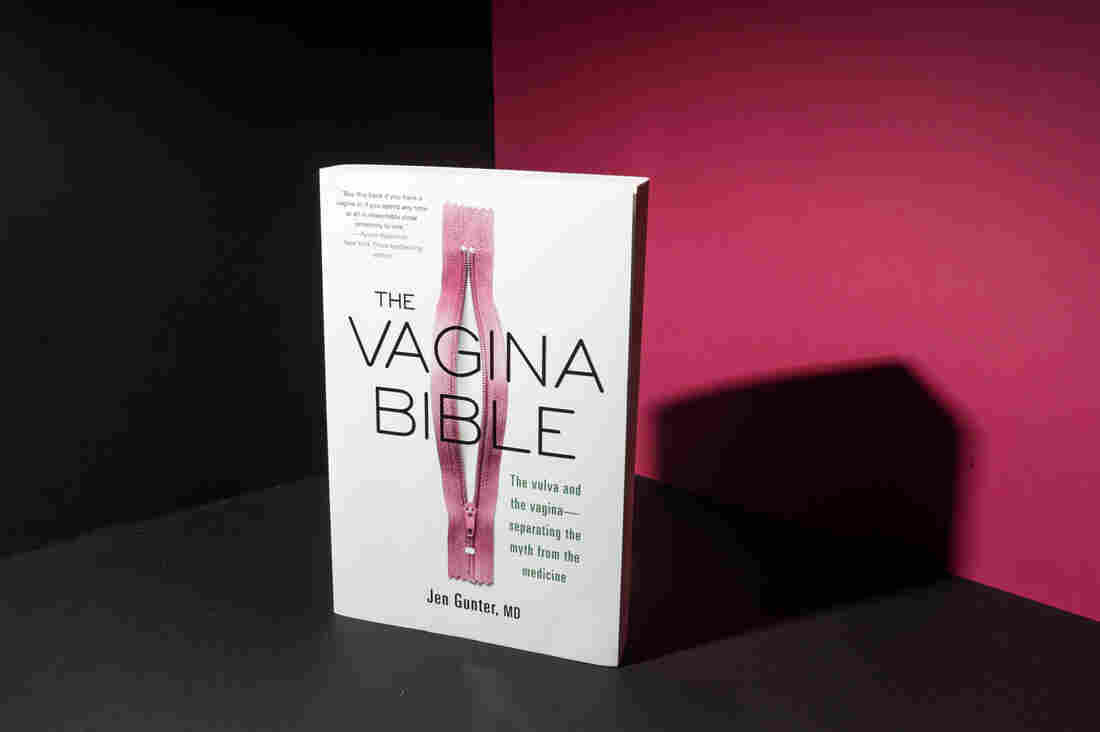Former Uber Engineer Charged With 33 Counts Of Trade-Secret Theft

Former Google engineer Anthony Levandowski, was charged Tuesday with stealing closely guarded secrets before he signed on with Uber, which was scrambling to catch up in the high-stakes race to build robotic vehicles.
Jeff Chiu/AP
hide caption
toggle caption
Jeff Chiu/AP
It may have appeared that Anthony Levandowski was out of the legal hot seat after Google’s parent company, Alphabet, agreed to settled a corporate espionage lawsuit against Uber last year. But the controversial Silicon Valley executive is at the center of another case stemming from the same allegations — only this time it is federal prosecutors claiming that after years of spearheading Google’s autonomous vehicle division, he looted a trove of top-secret files before going to work with Google’s primary rival, Uber.
Levandowski was charged on Tuesday with 33 counts of theft and attempted theft of trade secrets for allegedly making off with about 14,000 files pertaining to the Google’s Waymo self-driving car project.
The criminal complaint filed by the U.S. Attorney’s Office in Northern California alleges that in the months before he abruptly resigned from Google in January 2016, Levandowski downloaded and copied key files onto his laptop. He then used those trade secrets to create his own self-driving truck company called Otto, according to the documents. Months later that startup was acquired by Uber for roughly $680 million. Additionally, Uber named Levandowski as head of the ride-hailing company’s autonomous vehicle department, which was getting off the ground at the time.
“All of us have the right to change jobs, none of us has the right to fill our pockets on the way out the door,” U.S. Attorney David Anderson said in a statement. “Theft is not innovation.”
Court documents say Levandowski made off with circuit board drawings and schematics as well as detailed designs for light sensor technology called Lidar that took “years of research and testing, and millions of dollars in investment” for Google to produce.
“The FBI will not tolerate the theft of trade secrets,” FBI Special Agent in Charge John Bennett, told NPR in an emailed statement. “These are the Crown Jewels of companies and this unlawful behavior has a real impact on our economy, local jobs, and consumers around the country and even the world. Silicon Valley is not the Wild West.”
Levandowski’s lawyers, Ismail Ramsey and Miles Ehrlich, say he’s an innovator in the self-driving technology field and “didn’t steal anything from anyone.”
“The downloads at issue occurred while Anthony was still working at Google — when he and his team were authorized to use the information. None of these supposedly secret files ever went to Uber or to any other company,” they said in a statement, adding that the latest charges rehash “claims already discredited in a civil case.”
The lawsuit between the two tech giants over the same issue was settled last year after a four-day trial in which Levandowski refused to cooperate with Uber’s defense attorneys, citing Fifth Amendment privileges. He was subsequently fired from Uber.
In the end, Uber, which at the time was planning to go public, agreed to pay Alphabet’s Waymo subsidiary $245 million to end the legal proceedings, and not to use its technology.
The judge who oversaw the lawsuit also recommended the case for criminal investigation, which is what led to the indictment against Levandowski.
“We have always believed competition should be fueled by innovation, and we appreciate the work of the U.S. Attorney’s Office and the FBI on this case,” a Waymo spokesperson told NPR in an emailed statement. Meanwhile, Uber said it has “cooperated with the government throughout their investigation and will continue to do so.”
If convicted, Levandowski faces up to 10 years in prison and a maximum fine of $250,000 on each of the 33 counts of trade-secret theft.
‘Vagina Bible’ Tackles Health And Politics In A Guide To Female Physiology

In The Vagina Bible, gynecologist Jen Gunter dispels myths about the female body.
Meredith Rizzo/NPR
hide caption
toggle caption
Meredith Rizzo/NPR
Hey, women: Dr. Jen Gunter wants you to understand your own vagina.
The California gynecologist is on a quest to help women get the facts about their own bodies. It isn’t always easy. In an era of political attacks on women’s reproductive choices and at a time when Internet wellness gurus are hawking dubious pelvic treatments, getting women evidence-based information about their health can be a challenge, she says.
But Gunter isn’t backing down.
“I’m really just trying to give women information so they can make informed choices,” Gunter tells NPR. “Misinformation is the opposite of feminism. Making an empowered decision requires accurate information.”
Gunter started her blog, Wielding the Lasso of Truth, almost 10 years ago, writing on topics that range from abortion politics to the risks to women who eat the placenta after childbirth (yes, really). She rose to Internet fame as she took on the very public task of debunking several treatments touted by Gwyneth Paltrow and her wellness empire, Goop — including $66 jade eggs designed to be inserted into the vagina and a treatment known as “vaginal steaming.” Gunter now writes a column about women’s health for the New York Times.
She spoke about her new book, The Vagina Bible, with NPR contributor and family physician Mara Gordon. The interview has been edited for clarity and length.
Gunter started a blog almost 10 years ago writing about women’s health topics. She now has a column on women’s health for The New York Times.
Jason LeCras
hide caption
toggle caption
Jason LeCras
The Vagina Bible is coming out at a moment where women’s reproductive health in the U.S. is a huge political issue. Yet this book is more clinical than political. What made you want to take this approach?
I found myself debunking the same myth over and over again: “No, you shouldn’t put yogurt in your vagina. No, you shouldn’t put garlic in your vagina.” I got really fixated on this idea that I wanted women to have a textbook so they could divorce themselves from the cacophony that’s online. … When I went through medical school, Harrison’s Principles of Internal Medicine was the internal medicine Bible. Williams Obstetrics was my obstetrics Bible. That’s how I referred to my resources that I went to over and over again.
You talk about how women are conditioned to think their vaginas are abnormal, saying, “There’s a lot of money in vaginal shame.” You argue that it’s related to marketing of procedures like vaginal rejuvenation, or expensive objects women are told to put in their vaginas, or cleansing gels and wipes they’re encouraged to use. What’s going on?
I have noticed a huge increase in what I can only describe as women being “vaginally hyperaware.” I did a fellowship in infectious diseases in 1995, and since then, I have specialized in vaginitis — irritation of the vagina. The number of patients, the percentage that I see, who have nothing physiologically wrong with them has increased dramatically.
What do they tend to be experiencing?
I would say odor, volume of discharge. … Then there’s also this group of patients who are convinced they have yeast infections. They definitely have something causing their symptoms that’s not yeast — usually chronic vulvar irritation. So what happens when someone comes in and the doctor can’t find anything wrong is that many doctors will just give antibiotics or give antifungals.
Do your patients ever feel like you’re dismissing or not believing their symptoms?
For so many years, women have had their symptoms dismissed. They’ve been told that their normal bodies are wrong. And so there are all these complex messages. I really try to pin down and ask them, “OK, so what’s your bother factor? And then let’s work it out from there.”
An interesting theme in the book is something I see in my own primary care practice: the “well, it can’t hurt” phenomenon. For example, a doctor might tell a woman to only wear white cotton underwear if she’s having recurrent yeast infections, because “Well, it can’t hurt, right?” Doctors suggest a lot of treatments that don’t have any evidence behind them. What’s going on?
I think that it’s really hard for doctors to say, “I don’t know.” That’s something that I learned being a parent of children who had unfixable medical conditions. [My] son has cerebral palsy, and [my] other son has a heart condition that can’t be fixed. … The most valuable thing, actually, a physician ever told me when I was struggling with my kids was, “You know, if we had better therapies to offer you, we’d be offering them to you.” And that was a really profound moment.
How do you approach this as a clinician, when you can’t offer your patients a quick-fix treatment with rigorous research behind it?
I actually have a lot of therapies for a lot of conditions that people think are impossible to treat. But I do get a lot of patients saying, “Is this the best you have?” And I say, “Yes. Yes, it is the best I have.” And I explain why.
Most people can understand the science behind what we’re offering. … The biggest issue is that we don’t have the time to explain it. If you’re only given seven minutes to explain to someone the complexities of chronic yeast infections — because actually, immunologically, it’s a little bit complex — the only way you can do it is in a horrible, patriarchal “Well, just do this” manner.
Let’s talk about your other specialty — women’s pelvic pain. Why is this so hard to treat?
Pain is so complex. When you explain it to patients, you have to be so careful, because it can sound like you are saying their pain is in their head, when that’s not what you mean. It’s in their nervous system. It’s physiologically very hard to explain.
Dealing with pain is very humbling as a physician. We’re really talking about improvement, not fixing. And that’s really very hard for people to accept. We have all of this cool medicine, all these advances, and we can’t fix pain. It’s frustrating.
Doctors don’t have a great track record of taking women’s pain seriously.
We know anxiety and depression amplify pain. It’s well-known. I work with a pain psychologist, and I’ll talk about mind-body medicine. When I say that, a patient often hears that I’m dismissing their pain. What I’m doing is actually taking it very seriously. … People come in and they want scalpels, right? They want a grand thing because when you have pain, it’s huge, it’s all-consuming. And you come in and you hear, “Wait, what? Physical therapy? And managing my anxiety? How can you fix my huge problem with these seemingly little things?” So when you have a huge problem, you think that you need a huge solution, like surgery, like an MRI, because those are big.
We doctors have had a strictly biomedical model for disease for a long time. It’s a pretty recent development that we consider sex, relationships, stress and even sexism within our purview. Do you feel like your patients are eager for you to address those things?
I think that women appreciate knowing the forces that led us here. … I want people to understand that the patriarchy has been everywhere. Medicine is part of everything. So of course medicine has patriarchy. … I personally don’t think that medicine is worse than anything else, but I do think that because medicine cares for people, we have the biggest duty to respond to it fast.
I think that a lot of women are really hungry for a woman physician to stand up and say, “Wait a minute. Wait, wait, wait. I know about women’s bodies. That’s not going to fly, because I know the physiology.”
What is the most absurd vaginal product that you’ve come across in your research?
Ozone getting blown into your vagina. It’s highly toxic for your lungs. … I can’t imagine what it does to your vagina.
Mara Gordon is a family physician in Camden, N.J., and a contributor to NPR. You can follow her on Twitter: @MaraGordonMD.
Serena Williams Beats Maria Sharapova In U.S. Open’s 1st Round
NPR’s David Greene talks to Courtney Nguyen, a tennis reporter and co-host of the No Challenges Remaining podcast, about the start of the U.S. Open tennis tournament.
DAVID GREENE, HOST:
Let’s go back to 1999. A 17-year-old Serena Williams won her first-ever Grand Slam singles title at the U.S. Open. Twenty years later, Williams is still going strong. Yesterday, she faced off against Maria Sharapova at the Open and won. If she goes on to win the U.S. Open, she would tie the all-time record of 24 Grand Slam singles titles, but she hasn’t won a grand slam title since 2017, and the competition ahead is fierce.
Courtney Nguyen is on the line from New York. She’s attending the U.S. Open. She’s a tennis reporter and co-hosts the “No Challenges Remaining” tennis podcast. Good morning, Courtney.
COURTNEY NGUYEN: Good morning, David.
GREENE: These are two longtime veterans playing yesterday, Sharapova and Williams. What did it feel like? Serious rivals out there.
NGUYEN: You know, everybody gets very, very angry when we call this a rivalry simply because if you’ve beaten somebody 18 – now 19 consecutive times, there’s an argument to be made that maybe…
GREENE: It’s not a rivalry (laughter).
NGUYEN: …It isn’t one. But yeah, exactly. Is it? And I think even Maria will say, you know, it’s a big question mark. But at the end of the day, these are two of the marquee names of women’s tennis over the last 15 years. And they’re the biggest draws, you know, in terms – when we talk about ticket sales and all these sorts of things, topping, you know, the Forbes list of the most paid female athletes in the world for the last decade or so.
And so it’s a big deal when they do play, but the sport is so much about X’s and O’s and about forehands and backhand. And at the end of the day, Maria Sharapova’s game just does not match up well against Serena Williams’. And last night it was, again, a fairly perfunctory match – 6-1, 6-1, less than an hour…
GREENE: Wow.
NGUYEN: …It took. And Serena looked very good.
GREENE: I mean, she’s had a tough year. All is relative, of course, I mean, with the high expectations obviously. But I mean, she retired from the Rogers Cup final with those back spasms. She surrendered two straight sets in her loss in the Wimbledon final. I mean, is this big win over Sharapova a sign that she’s got a real shot this year at the Open?
NGUYEN: Well, I think one of the big things that – the draw, when it came out and we saw that these two were going to play each other, you knew that it meant that Serena was going to lock in from the very first match of this tournament, that she wasn’t going to take it easy. And sometimes she can start these matches a little bit slow and get going and get cranking midway through or towards the end of the first set. So in that way, I mean, it was great. She looked fantastic.
But the question is precisely what you raised. You know, she’s lost three straight major finals that she’s contested. That’s never happened in her career before. And her success rate, she hasn’t even won a set in those three finals. So yes, we know that Serena can win six matches to get into a major final right now. The question is that big seventh one. And seeing her get tested, as this tournament progresses, against more in-tune, informed competition, that’s going to be the biggest question.
GREENE: Last year’s U.S. Open final, I mean, we remember Naomi Osaka and Serena ended in – with a lot of controversy – I mean, with the chair umpire, lots of questions about gender, about race, sportsmanship, fairness were raised. I mean, is that still looming over this year? Has Serena mentioned it at all?
NGUYEN: Serena hasn’t mentioned it at all. And Naomi has fielded, you know, generally, the questions that’ve been put before her. But I think in a lot of ways, I mean, I think the sport would like to move on from that day, not just because of how uncomfortable that day was – and it’s very much one of those, like, where were you when all – you know, when everything started to break loose on Arthur Ashe on that final day? – but I think that because of – you know, ESPN did a recent documentary this past week talking about and rehashing the whole incident, it still is fresh in the minds of so many people.
But I think that just once Serena takes the court and finishes that match and fields any questions, she’s kind of moved on. And I think today once Osaka, you know, if she does win today and fields questions one last time, it might be OK for the sport to move ahead.
GREENE: Courtney Nguyen, thanks so much.
NGUYEN: Thank you.
GREENE: She co-hosts the “No Challenges Remaining” tennis podcast.
Copyright © 2019 NPR. All rights reserved. Visit our website terms of use and permissions pages at www.npr.org for further information.
NPR transcripts are created on a rush deadline by Verb8tm, Inc., an NPR contractor, and produced using a proprietary transcription process developed with NPR. This text may not be in its final form and may be updated or revised in the future. Accuracy and availability may vary. The authoritative record of NPR’s programming is the audio record.


